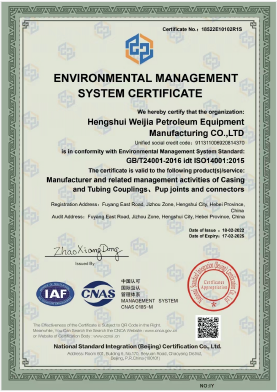- Afrikaans
- Albanian
- Amharic
- Arabic
- Armenian
- Azerbaijani
- Basque
- Belarusian
- Bengali
- Bosnian
- Bulgarian
- Catalan
- Cebuano
- Corsican
- Croatian
- Czech
- Danish
- Dutch
- English
- Esperanto
- Estonian
- Finnish
- French
- Frisian
- Galician
- Georgian
- German
- Greek
- Gujarati
- Haitian Creole
- hausa
- hawaiian
- Hebrew
- Hindi
- Miao
- Hungarian
- Icelandic
- igbo
- Indonesian
- irish
- Italian
- Japanese
- Javanese
- Kannada
- kazakh
- Khmer
- Rwandese
- Korean
- Kurdish
- Kyrgyz
- Lao
- Latin
- Latvian
- Lithuanian
- Luxembourgish
- Macedonian
- Malgashi
- Malay
- Malayalam
- Maltese
- Maori
- Marathi
- Mongolian
- Myanmar
- Nepali
- Norwegian
- Norwegian
- Occitan
- Pashto
- Persian
- Polish
- Portuguese
- Punjabi
- Romanian
- Russian
- Samoan
- Scottish Gaelic
- Serbian
- Sesotho
- Shona
- Sindhi
- Sinhala
- Slovak
- Slovenian
- Somali
- Spanish
- Sundanese
- Swahili
- Swedish
- Tagalog
- Tajik
- Tamil
- Tatar
- Telugu
- Thai
- Turkish
- Turkmen
- Ukrainian
- Urdu
- Uighur
- Uzbek
- Vietnamese
- Welsh
- Bantu
- Yiddish
- Yoruba
- Zulu
seamless pipe
Exploring Seamless Pipes Applications, Manufacturing, and Advantages
Seamless pipes are an essential component in various industries, particularly in construction, oil and gas, and manufacturing. These pipes are characterized by their lack of seams or welds, which distinguishes them from welded pipes and provides several advantages in terms of strength, durability, and resistance to pressure and corrosion. This article will explore the manufacturing process of seamless pipes, their various applications, and the advantages they offer.
Manufacturing Process
Seamless pipes are produced through a process known as rotary piercing followed by elongation, and ultimately, the pipes are cut to length. The production begins with solid round steel billets, which are heated to a temperature exceeding 1,200 degrees Celsius. At this high temperature, the billets are forced through a perforating mill, where they are pierced to create a hollow shell. This shell is then elongated and reduced in diameter via a combination of rotary and elongating processes, resulting in a seamless pipe.
The seamless manufacturing process allows for better control over the internal and external properties of the pipe, creating a finished product that has a uniform structure throughout its length. After the pipes are formed, they undergo various treatments, including heat treatment, to improve their mechanical properties and performance. Quality control measures, such as non-destructive testing, are also employed to ensure that each pipe meets the specified standards for strength and integrity.
Applications
Seamless pipes are utilized in a wide range of applications across different sectors. In the oil and gas industry, they are commonly used for transporting fluids and gases under high pressure and extreme temperatures. The pipeline systems that distribute oil and gas from extraction points to refineries and end-users rely on the durability and reliability of seamless pipes.
In the construction industry, seamless pipes serve as essential components for structural scaffolding, support beams, and reinforcement in concrete
. Their ability to withstand heavy loads and resist deformation makes them ideal for construction applications.seamless pipe

Seamless pipes are also prevalent in the manufacturing sector, particularly in the production of machinery and equipment. They are used in hydraulic systems, heat exchangers, boilers, and various industrial applications where high-pressure environments are common. The automotive industry, aerospace, and naval engineering also rely on seamless pipes for critical components that necessitate high strength and lightweight characteristics.
Advantages of Seamless Pipes
One of the primary advantages of seamless pipes is their superior strength compared to welded pipes. The absence of seams means that there are fewer points of weakness, allowing seamless pipes to handle high-pressure applications more effectively. They are also less likely to fail under extreme conditions, making them a safer choice for hazardous environments.
Seamless pipes also exhibit better corrosion resistance. The uniformity of the material composition throughout the length of the pipe minimizes the risk of corrosion at weak points, which is particularly important in applications involving exposure to chemicals and harsh environments.
Furthermore, seamless pipes require less maintenance over their lifespan. Their robust nature means that they can sustain significant wear and tear, reducing the need for frequent inspections and replacements. This translates to cost savings in terms of maintenance and operational downtime for industries reliant on extensive piping systems.
Conclusion
Seamless pipes represent a critical component in various industries, offering unparalleled strength, durability, and resistance to pressure and corrosion. The manufacturing process, although more intricate than that of welded pipes, results in a product that meets the highest industrial standards. As industries continue to evolve and demand higher performance materials, seamless pipes will undoubtedly maintain their importance and utility across numerous applications. Understanding the benefits and applications of seamless pipes can help industries make informed decisions about their piping needs, ensuring safety, efficiency, and reliability in their operations.
-
Well Casing Extension Couplings – Applications and InstallationNewsJun.06,2025
-
Types of Crossover Subs in Drilling & CompletionNewsJun.06,2025
-
Key Features of High-Quality Tubing Pup JointsNewsJun.06,2025
-
Installation and Maintenance Tips for Steel Couplings for PipeNewsJun.06,2025
-
How to Select the Right Pup Joint for Oil & Gas OperationsNewsJun.06,2025
-
Applications of Stainless Steel Pipe CouplingsNewsJun.06,2025







